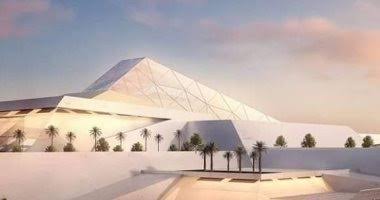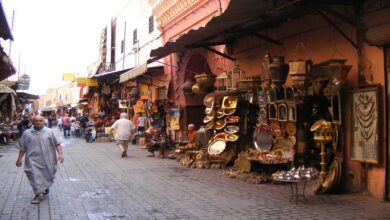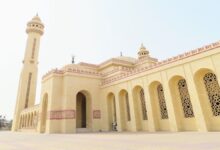The Capitals of Egypt History Told in the Halls of New Administrative Capital Museum

“The Capitals of Egypt Museum” is the first of its kind in the New Administrative Capital in Egypt. The museum tells the history of the Egyptian capitals from the ancient Pharaonic period till modern Cairo.
It celebrates the national history starting from ancient Egypt, passing through the Greek, Roman, Islamic and royal eras, and ending in the modern state.
Egypt has always been the land of civilizations and religions. Its cities witnessed major historical events resulting in countless archaeological treasures that aren’t all yet discovered. Throughout history, these capitals have always been the talk of orientalists around the world.
The Egyptian Ministry of Tourism and Antiquities is currently working in full swing to transfer a very unique collection of artifacts related to the Egyptian capitals.
Also, click here to read the article in Arabic.
Capitals of Egypt museum

The of the Capitals of Egypt’s main hall will display artifacts from the 7 ancient capitals of Egypt, namely; Memphis, Thebes, Tell Amarna, Alexandria, Islamic Cairo, Khedivial Cairo.
The collection will show the living conditions of each historical stage expressed through tools of war, the systems of government, official speeches and decorations.
The mummies of priests hall
The second hall is concerned with the afterlife from the ancient Egyptians perspective. It’ll display artifacts from Tutu tomb that was discovered in 2018 in Sohag Governorate, Upper Egypt.
The Capitals of Egypt Museum includes a hall dedicated to mummies and coffins of priests and statesmen, such as the royal cache of Deir el-Bahari that was discovered in 1881. The mummy belongs to Negmt, the wife of King Herihor, the high priest of Amun. What’s special about this mummy is that its eyes were inlaid with white and black stones giving you the feeling she is still alive.
The mummy of “Nasi Khonsu”, the second wife of the high priest of Amun, Banjam II, is also displayed. It is considered a distinct model for the development of the mummification method of the 21st family. The eyes are glorified with stones, and the skin color is dark yellow which gives a sense of life.
As for the mummy of Banjum II, the high priest of Amun, the skin was colored yellow and dark red and the mummy was wrapped in thin linen with colored fringes.
The hall will also display the mummy of ” Djed-Ptah-Iuf-Ankh” from the 21st family, decorated with rings on the fingers and toes.
According to the official preliminary information about the museum display scenario, it will display a set of canopic vessels, fake doors of tombs and alternate heads that simulate religious rituals of ancient Egypt.
Papyrus and lotus flower
A huge statue of King Ramses II and 2 obelisks were renovated to be placed at the main hall of the Capitals of Egypt Museum.
The external display area of the museum is being developed to display some artifacts, in addition to establishing green areas planted with papyrus plants and the lotus flower, the symbols of the north and south parts of ancient Egypt.
The museum will be equipped with screens displaying an interactive panoramic film on the history of each capital, the tranquil architecture, religious buildings and most famous landmarks.
Additional information
The following are important information you should know before visiting the capitals of Egypt museum, provided by Terhalk website.
1. Memphis was the capital at the beginning of ancient Pharaonic history, and it is adjacent to the capital, Cairo
2. Taiba was the religious and political capital in the Middle Pharaonic era, and it is the Luxor Governorate today
3. Tell el-Amarna was chosen by Akhenaten to be the capital of Egypt, due to its location between the mountains and the Nile, and it is in the Minya governorate
4. Alexandria was the first capital during the Ptolemaic era, after Alexander the Great built it in the pre-Christian era
5. Islamic Cairo was built by Jawhar Al-seqli to be the center of the Fatimid state
6. Khedivial Cairo is the heart of the present capital since the reign of Khedive Ismail and starts from Qasr al-Nil to Elattaba.
Also, click here to learn about the recent historical discovery of Saqqara.









